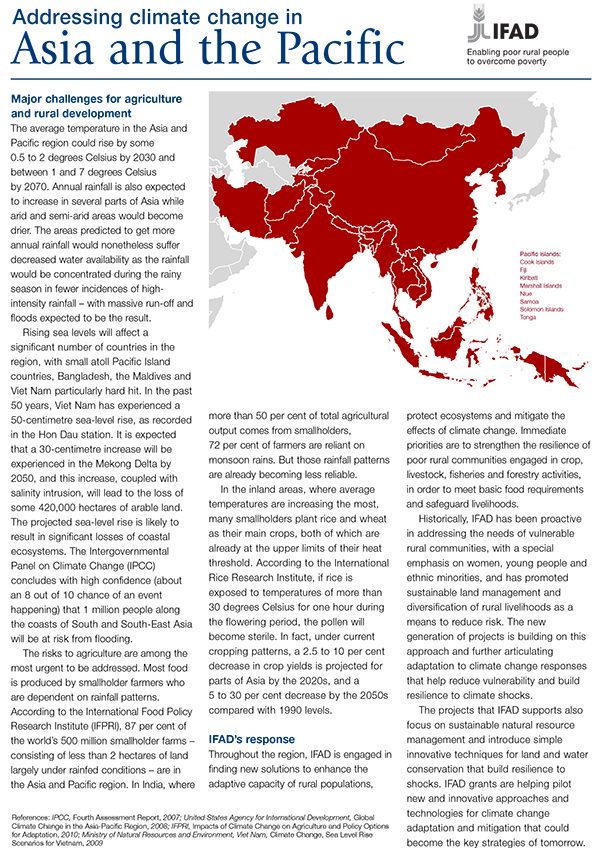Addressing climate change in Asia and the Pacific
Addressing climate change in Asia and the Pacific
November 2011
The average temperature in the Asia and Pacific region could rise by some 0.5 to 2 degrees Celsius by 2030 and between 1 and 7 degrees Celsius by 2070. Annual rainfall is also expected to increase in several parts of Asia while arid and semi-arid areas would become drier. The areas predicted to get more annual rainfall would nonetheless suffer decreased water availability as the rainfall would be concentrated during the rainy season in fewer incidences of highintensity rainfall – with massive run-off and floods expected to be the result. Rising sea levels will affect a significant number of countries in the region, with small atoll Pacific Island countries, Bangladesh, the Maldives and Viet Nam particularly hard hit. In the past 50 years, Viet Nam has experienced a 50-centimetre sea-level rise, as recorded in the Hon Dau station. It is expected that a 30-centimetre increase will be experienced in the Mekong Delta by 2050, and this increase, coupled with salinity intrusion, will lead to the loss of some 420,000 hectares of arable land. The projected sea-level rise is likely to result in significant losses of coastal ecosystems. The Intergovernmental Panel on Climate Change (IPCC) concludes with high confidence (about an 8 out of 10 chance of an event happening) that 1 million people along the coasts of South and South-East Asia will be at risk from flooding.

Publisher
IFAD